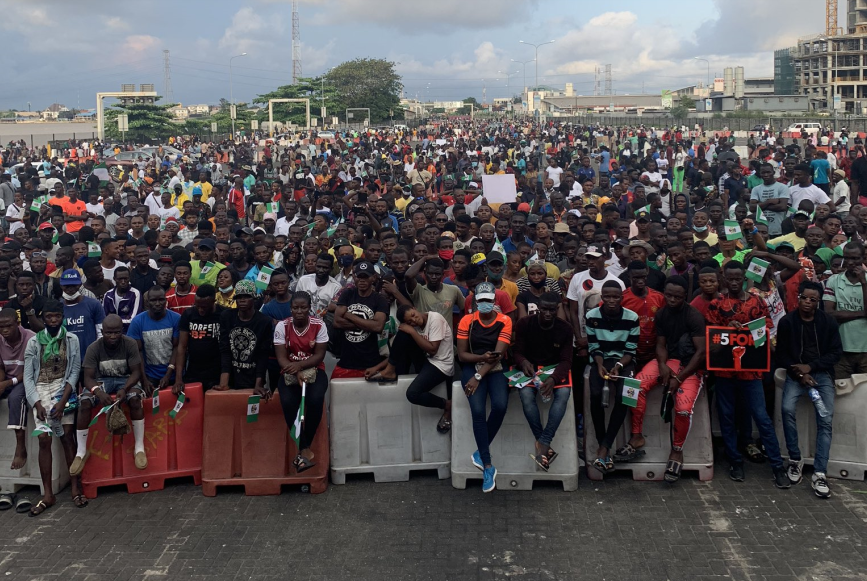Religious freedom or a misstep in uniformity? Criticizing NYSC skirt ruling

National Youth Service Corp members on parade. Photo Credit- Business Day
In June 2025, the Federal High Court in Abuja delivered a landmark judgment, declaring the National Youth Service Corps’ (NYSC) mandatory trouser policy for female corps members unconstitutional. The ruling, stemming from suits filed by former corps members Ogunjobi Blessing and Ayuba Vivian, mandates the NYSC to permit skirts for female corps members with religious objections to trousers, citing violations of their constitutional rights to freedom of religion and human dignity under Section 38(1) of the 1999 Constitution. While the decision has been hailed as a victory for religious freedom, it raises complex questions about balancing individual rights with institutional uniformity, the practical implications for the NYSC, and the broader socio-cultural dynamics at play. This piece critically examines the ruling, its merits, and its potential consequences.
Why the court ruling is a step towards religious freedom
At its core, the court’s decision is grounded in a robust defense of constitutional rights. The plaintiffs argued that the NYSC’s insistence on trousers contravened their Christian beliefs, specifically referencing Deuteronomy 22:5, which they interpret as prohibiting women from wearing garments associated with men. The court agreed, ruling that the policy infringed on their right to manifest their religion and subjected them to harassment and humiliation, constituting a breach of their dignity. The award of ₦500,000 in damages to each plaintiff and the order to recall them for their NYSC certificates underscore the court’s view that the policy was not only discriminatory but also dehumanizing.
From a legal perspective, the ruling aligns with Nigeria’s constitutional commitment to freedom of thought, conscience, and religion. Section 38(1) explicitly protects the right to practice and manifest one’s beliefs, and the court’s interpretation reinforces the principle that public institutions must accommodate sincerely held religious convictions unless there is a compelling reason not to. This is particularly significant in a pluralistic society like Nigeria, where religious diversity is a defining feature. The decision echoes global human rights frameworks, such as the African Charter on Human and Peoples’ Rights, which Nigeria has ratified, emphasizing protection from discrimination based on religion.
Moreover, the ruling addresses a tangible grievance: the plaintiffs reported harassment and exclusion from completing their service due to their attire. Such treatment not only undermines the NYSC’s mission to foster national unity but also risks alienating individuals who feel their identities are disregarded. By ordering the NYSC to provide skirt options, the court signals that inclusivity must extend beyond rhetoric to practical accommodations.
RELATED STORIES
Surviving on ₦33,000: Amnesty International, NYSC and the fight for good governance
Why Nigeria must reject the two-year NYSC extension
Counter argument on the ruling promoting religious freedom
However, the ruling is not without its flaws and potential pitfalls. The NYSC’s uniform policy was designed to promote unity and discipline, key pillars of the scheme since its inception in 1973. The standardized attire khaki trousers, white shirts, and caps serves as a visual equalizer, minimizing distinctions of class, ethnicity, or religion among corps members. Allowing skirts, even for religious reasons, risks fragmenting this uniformity and could set a precedent for further exemptions, potentially undermining the program’s cohesion. For instance, if skirts are permitted for Christian women citing Deuteronomy, could other groups demand modifications based on their beliefs or cultural preferences? The court’s failure to address this slippery slope leaves the NYSC vulnerable to future challenges.
Practically, implementing the ruling poses logistical challenges. The NYSC serves hundreds of thousands of corps members annually, and introducing skirt options would require redesigning uniforms, adjusting procurement processes, and training staff to handle exemptions sensitively. The financial and administrative burden could strain the program’s already limited resources. Moreover, the ruling does not specify design parameters for the skirts (e.g., length, style), which could lead to inconsistent application and disputes over what constitutes an acceptable alternative. Without clear guidelines, the NYSC risks replacing one form of rigidity with another.
The reliance on Deuteronomy 22:5 also raises questions about the selective application of religious texts in public policy. The verse’s interpretation that trousers are inherently male attire is subjective and not universally held among Christians. Trousers have become gender-neutral in many modern contexts, and the NYSC’s uniform is arguably a professional, non-gendered standard rather than a “male” garment. The court’s acceptance of this interpretation without scrutiny risks prioritizing individual exegesis over institutional pragmatism. Furthermore, the ruling does not address potential gender disparities: male corps members, for instance, have no equivalent avenue to challenge the trouser policy based on religious or cultural grounds, which could spark accusations of unequal treatment.
The bigger picture of this controversy
The ruling reflects a broader tension in Nigeria between secular governance and religious influence. The NYSC, as a federal institution, operates in a country where religion often shapes public life. The court’s decision aligns with previous accommodations, such as allowing hijabs for Muslim female corps members, which suggests a growing recognition of religious diversity. However, this also highlights inconsistencies in the NYSC’s approach: if hijabs are permitted, why was the skirt issue contentious? The lack of a coherent policy on religious accommodations underscores the need for the NYSC to proactively address such issues rather than relying on litigation.
Culturally, the ruling taps into Nigeria’s evolving gender norms. Trousers for women are widely accepted in urban areas, but in some conservative communities, skirts remain a symbol of modesty and femininity. The plaintiffs’ stance resonates with those who view trousers as a departure from traditional or religious ideals of womanhood. Yet, this perspective risks reinforcing stereotypes about gender roles, potentially alienating women who embrace trousers as empowering or practical. The NYSC, as a youth-focused program, should ideally promote inclusivity without entrenching rigid gender binaries.
RELATED STORIES
How to secure a job immediately after NYSC
Should NYSC be removed? Debate over relevance in modern Nigeria
Conclusion
The court’s ruling is a commendable step toward protecting religious freedom, but it falls short in addressing the practical and philosophical complexities of implementing such a change. To balance individual rights with institutional goals, the NYSC should develop a clear, inclusive uniform policy that accommodates religious diversity while preserving the scheme’s unifying ethos. For example, it could introduce a standardized skirt option designed to meet safety and functionality requirements for corps members with verified religious objections. This would minimize arbitrariness and maintain a semblance of uniformity.
Additionally, the NYSC should engage stakeholders, including religious leaders and corps members, to craft guidelines that prevent abuse of exemptions while respecting genuine beliefs. Training programs for NYSC officials are essential to ensure respectful enforcement and avoid the harassment reported by the plaintiffs. Finally, the government should consider funding support to offset the costs of uniform modifications, ensuring the NYSC’s financial stability.




